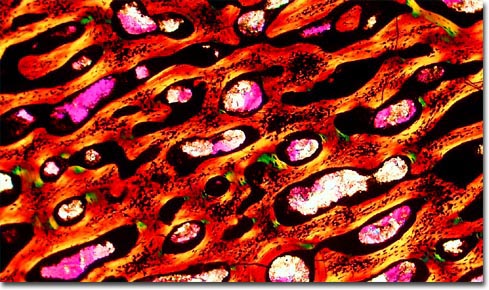|
Found in fossilized bones, collophane is a microcrystalline variety of apatite, which is the primary source of the world’s phosphorous supplies. Similar to other types of apatite, collophane is a phosphate mineral that occurs in various forms, such as nodules, crystals, or masses. Though collophane is characteristically white, other apatites are variously colored, often featuring red, green, and brownish hues. In fact, the glassy minerals would likely be utilized as gemstones if it were not for their relative softness compared to other materials utilized for such purposes, apatites only exhibiting a Mohs hardness of 5, rather than the 7 to 9 displayed by the majority of gems.
|
